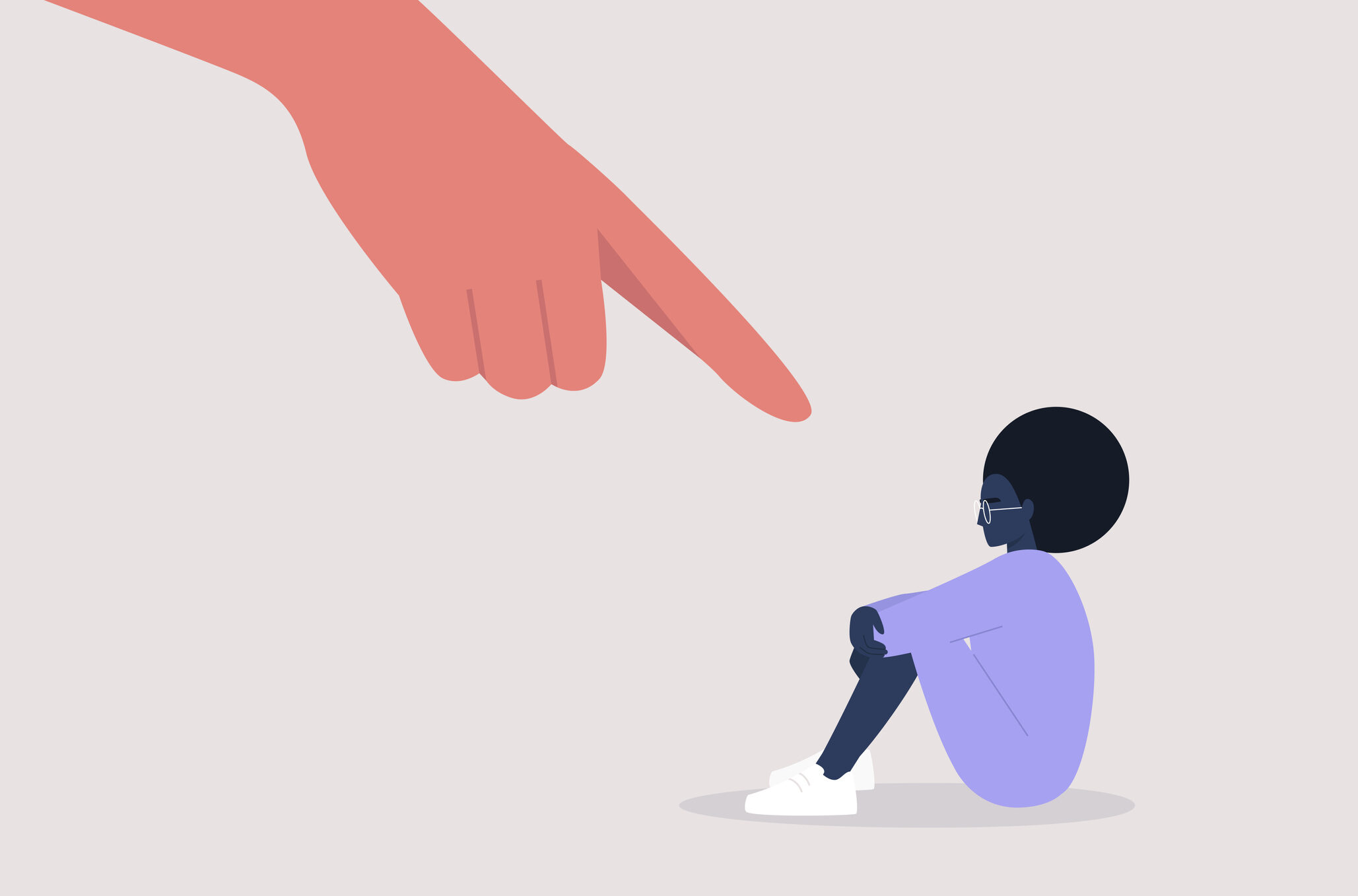Exploring the Intersection of Race, Culture, and ADHD Stigma in BIPOC Communities

Two decades ago, as a single mother with two sons diagnosed with ADHD, I aspired to establish a support group for families similar to mine in Chicago. When I sought advice from the head of a neighboring suburban support group, she discouraged me and proposed I should join her group because, according to her, kids in the urban areas did not have ADHD but rather "behavior problems." In other words, Black children were simply considered naughty rather than afflicted with ADHD.
I've faced criticism from other Black parents for medicating my children, filled with fears about its side effects or even its secret aim of wiping out the Black community. These parents were in denial about their children also having ADHD, blaming the schools for racially targeting their kids instead. My own mother insisted that strict discipline was all my children needed, while a social worker declared I was being an enabler for requesting accommodations for my son.
The harmful impact of stigmatization, prejudice, and entrenched stereotypes on managing ADHD in our family has been significant. This is not a unique experience - others continue to encounter these damaging incidents to this day, even though they occurred over 20 years ago. The ADHD community has long grappled with such stigma, which alarmingly persists even among professionals, not to mention its rampant prevalence in marginalized communities such as the Black community.
Such ignorance, at play both within and beyond our families and communities, needs to be addressed. ADHD author and advocate René Brooks, who spearheads the Black Girl, Lost Keys blog, asserts that our children are penalized for displaying neurodivergent behaviors. She stresses that it's incumbent upon us to persuade families to adopt diverse parenting approaches in the face of the reality that teaching our children how to balance their identities as Black individuals with ADHD is a necessity, albeit a difficult one.
These stigmas not only shape parenting within the Black community but also attract external criticism, posing the additional challenge of adjusting parenting styles without preaching or finger-pointing from white people, according to Brooks.
IngerShaye Colzie, an ADHD coach and therapist based near Philadelphia, highlights that humiliation stemming from kin and friends can be particularly damaging. She observes, "If your circle of friends is not solid, you would likely be shunned by your community owing to your parenting style and others' expectations from your child. Such misunderstandings can exclude you from your friend group, leaving you in isolation." Both she and Brooks acknowledge this stigma contributes to feelings of loneliness and marginalization among those with ADHD, who feel outcast from their family circles and cultural communities. The pervasive cultural stigma further ostracizes Black, Indigenous, and People of Color (BIPOC) within the ADHD community.
Kofi Obeng, who leads an online ADHD support group for African Americans, perceives these stigmas as rooted in an overarching system of white supremacy that devalues Black lives and persistently penalizes Black identity. He explains that these stigmas often result in blame being placed on the individual with ADHD rather than recognizing the true root of the problem, ADHD itself. Obeng shares his own experience of his family attributing his ADHD struggles to a personal lack of resolve, interpreting his behaviors as personal failings rather than symptoms of his condition.
This negative stigma engenders resistance towards ADHD diagnosis and treatment, with many parents fearing that an ADHD diagnosis implies an intellectual disability. There is also the fear of segregation into special education programs, where Black and Latinx children are disproportionately represented, often resulting in negative consequences.
Romanza McAllister, an informed trauma psychotherapist, ADHD coach, and adult with ADHD reveals another fear among Black parents - that diagnoses and associated treatment could lead to mistreatment and punishment for their children, potentially pushing them into the school-to-prison pipeline.
These fears are exacerbated by a history of abusive institutional medical practices, leading to hesitation and often refusal to include medication in ADHD treatment plans - a choice with often devastating outcomes.
Chicago-based child and adult psychiatrist Angela Mahome, M.D., notes that parents from her Black patient families generally tend to react with defensiveness and anger when she recommends ADHD medication. She finds that sharing her own experience with ADHD and the medication she uses can often make a difference. "While I strive to not bring my own experiences into the sessions, it sometimes benefits if I disclose my own ADHD and the fact that I use medication to manage it. It makes them view me differently, as well as giving parents optimism about their child's future."
This apprehension is not restricted to children. According to McAllister, the Black community tends to associate ADHD with laziness and rebellious behavior in children. These perceptions impact the adults as well. Studies reveal that African Americans, compared to whites, are often inconsistent in receiving care and are seldom included in related research. They are more likely to resort to emergency rooms or general care instead of mental health specialists. "Disclosing a diagnosis is often risky. We have frequently witnessed our needs being ignored and neglected."
People of color are often subjected to criticism or scorn for their differences from their white equivalents. Their beliefs are different. They don’t operate the same way, nor do they arrive at the same conclusions. Thus, a Black parent who is hesitant to medicate her child or accept a diagnosis is perceived to be less educated or unaware. They are thought to lack understanding of what is best for their child. These stereotypes stem in part from practitioners’ own preconceived notions and insufficient knowledge of cultural norms.
"When people of color finally decide to seek professional help or disclose, they are often met with doubt," observes McAllister. "A high number of individuals have bumped into practitioners who resist learning about the traditions and beliefs of other cultures. They also fail to confront their own biases and prejudices."
All of this results in people of color, both children and adults, being undiagnosed, misdiagnosed, and untreated. This tends to produce negative outcomes. As McAllister points out, "Living with undiagnosed ADHD, while dealing with racism and discrimination, exposes one to a range of coexisting mental and physical health conditions. Going undiagnosed or misdiagnosed can lead to faster and more common encounters with the justice system and institutionalization." Those who are undiagnosed and untreated are more likely to face issues at home, school, or work and are more prone to bullying, in both playgrounds and workplaces.
Obeng concurs. "Some ADHD sufferers develop feelings of inferiority and lead solitary lives. These conditions are fertile ground for depression, addiction, and self-harm. Their harmful impacts affect multiple aspects of an individual’s life, leading to health issues, relationship troubles, financial problems, and work-related difficulties," he says. "The school-to-prison pipeline is full of Black youth. Many Black families struggle to secure wealth. High poverty levels and a fight for survival are common."
A recent meeting of African American leaders and advocates in the ADHD community pinpointed stigma as the primary issue faced by people of color with ADHD. They sought strategies to tackle this problem. McAllister noted that having diagnosed adults share their stories of how treatment improved their lives could help young people accept their diagnosis. Dr. Mahome is also confident that this could provide reassurance to parents. "If people openly admit to having ADHD, it normalizes the condition. It benefits parents to see successful individuals managing ADHD well." That’s why she might talk about her own ADHD and her child's, who studies at the University of Chicago, while dealing with hesitant African American parents.
René Brooks has contributed to normalizing ADHD in the Black community, especially among women. Brooks, a social media influencer, runs a blog and website. As an increasing number of people share their personal experiences, there will be a decrease in the humiliation and stereotypes associated with ADHD across communities.
Creating a sense of community is key. We need spaces to share our struggles, celebrate our victories, and offer mutual support. There are already established community spaces for people of color. ADDA hosts an African American/Black Diaspora + ADHD virtual peer support group, co-led by McAllister and Obeng. Furthermore, Colzie, Brooks, and others have developed casual platforms, like Facebook channels and blogs for Black women with ADHD to offer support to each other.
Distributing relevant information at conferences can also provide aid, along with books and articles like this one. McAllister believes that "defining clear ADHD workplace accommodations, providing more integrated training on implicit bias, anti-racism, and ableism at schools and workplaces" could prove beneficial. Individual efforts are also needed. We have to feel comfortable enough to converse about ADHD with friends, family, and colleagues.
Obeng believes the solutions lie in individuals and communities as a whole. “On a personal level, it’s about self-care and connecting with communities like ADDA. There you can form friendships and get resources. Once you are connected to the right community, possibilities open up — support groups, coaches, conferences.”
Reducing stigma in BIPOC communities is not all on us. We need more practitioners who look, talk, and act like the patients and clients they see. Established organizations perpetuate stereotypes and maintain stigma. They must recognize the role they play, and they must be ready to correct it.
Eliminating ADHD stigma in communities of color will not be quick or easy. But individuals, groups, and organizations are willing to tackle the challenges. We have a long road ahead. We’ll know success when ADHD stigma doesn’t deter any child or adult from the diagnosis and treatment they need.
Evelyn Polk Green, M.S.Ed., is a past president of ADDA and CHADD. She holds bachelor’s and master’s degrees from National Louis University and a master’s degree from Northern Illinois University.
1. Use clinical language that reinforces ADHD as a medical condition.
2. Avoid language that can be upsetting or perceived as negative:
1. Don’t talk about medication in terms of punishment or reward.
2. Be clear about why you are or are not giving the medication on non-school days.
3. Do not shame or allow others to shame a child for seeing a therapist or taking medication.
1. When addressing concerns with parents, keep the focus on the student being discussed.
2. Acknowledge a student’s improvement.
— Angela Mahome, M.D.
Prompt and allow the parent to ask questions. Patients and their families may be afraid to show that they do not understand the diagnosis. Or they are not sure what to ask.
Always make sure to know what families need and their expectations. Some families don’t want treatment, they just want to know what is going on. Offer treatment options, but allow time for deliberation. They may need a follow-up appointment.
It is important to incorporate families into the discussion. Many families will consider the treatment option to be a family decision. Don’t rely on the parent and child in the room to relay information to others. In medical school, we are taught that the patient and doctor are the ones to make all treatment decisions, but many cultures believe that “it takes a village to raise a child.” Include the village if that is the wish of the family and the child.
If you do not understand something you need to know about the patient, ask questions. It is not a weakness to not know. Your questions show your interest.
Many Blacks parents fear the medical system and may have waited to come in for help. Don’t mistake such a situation for disinterest.
It is important to recognize matriarchal structures. The grandmother or another elder in the family may be making the decisions about whether to pursue treatment. Ask the decision-makers to be in the room to inform the decision-making.
Differences in language and communication can be barriers to care. Listen to the family and their communication styles.
Acknowledge your own biases with Black patients. They are there and are shown in studies. Understand them and correct them. Not doing so brings outcomes detrimental to the patient.
— Napoleon B. Higgins, JR, M.D.
SUPPORT ADDITUDE Thank you for reading ADDitude. To support our mission of providing ADHD education and support, please consider subscribing. Your readership and support help make our content and outreach possible. Thank you.




